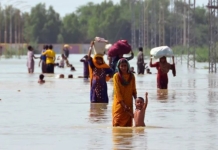AAs India gears up for its 18th general election this spring, all eyes are on the incumbent Prime Minister, Narendra Modi, who is poised to secure a third term in office according to recent surveys. Modi’s anticipated victory underscores his towering presence in Indian politics, presenting him as a figure who symbolizes India’s ascent on the global stage. However, beneath this facade of triumph lies a contentious reality. Modi, known for his charismatic leadership and humble beginnings, stands among only a handful of predecessors who have wielded such immense influence, akin to Jawaharlal Nehru and Indira Gandhi. While Nehru and Gandhi hailed from the Indian National Congress, Modi represents the Bharatiya Janata Party (BJP), which espouses a starkly different ideological stance, particularly regarding the interplay of faith and state.
Unlike his BJP predecessor, Atal Bihari Vajpayee, Modi enjoys a level of authority unmatched in recent Indian political history. His tenure has witnessed a centralization of power, eroding the autonomy of key institutions and fostering a cult of personality around himself. Despite criticism of his methods, Modi’s popularity endures, buoyed by populist measures and infrastructural developments touted as hallmarks of India’s progress. Proponents of Modi hail his leadership as transformative, citing India’s economic strides and reassertion of its cultural identity under his rule. However, sceptics warn of underlying fractures exacerbated by his policies, including heightened religious and regional tensions, environmental degradation, and the erosion of democratic norms.
India, akin to the United States in its federal structure, stands as a testament to diversity, echoing the continental scale of the European Union. Its states, marked by rich cultural, religious, and linguistic tapestries, portray a mosaic of identities. From Bengalis to Kannadigas, from Keralites to Punjabis, each region boasts a unique heritage distinct from the dominant heartland states of northern India, where the BJP holds sway. Henceforth, as India steer through the complexities of its political landscape, the allure of Modi’s vision clashes with the enduring realities of a diverse and pluralistic society. While his rhetoric promises global leadership, the nation grapples with the preservation of its democratic ethos and cultural diversity, elements vital to its identity and resilience. As the electoral campaign unfolds, the choice before India reflects not only a political decision but a defining moment in its quest for stability and inclusivity amidst the currents of change.
Historically, coalition governments celebrated this diversity, nurturing a harmonious coexistence. However, under Modi’s leadership, the BJP has pursued a path of uniformity, endeavouring to impose linguistic hegemony, elevate Modi as the sole arbiter of power, and assert control through legislative and financial mechanisms from the capital, New Delhi. Since assuming office, the Modi administration has systematically eroded the autonomy of non-BJP state governments, leveraging the ostensibly impartial role of governors to advance its agenda. Legislative overreach, particularly in domains traditionally under state jurisdiction like agriculture, has fuelled tensions with states governed by opposition parties, including Kerala, Punjab, Tamil Nadu, Telangana, and West Bengal.
Modi’s tenure reflects a concerted effort to centralize and personalize political authority. Echoes of his governance style resonate with the authoritarian tendencies witnessed during Indira Gandhi’s premiership, notably from 1971 to 1977. However, Modi’s approach surpasses precedent, amplifying the subjugation of institutional autonomy reminiscent of Indira Gandhi’s era, but with an intensified vigour and contrasting approaches. In the story of Indian politics, the stark contrasts between Indira Gandhi and Narendra Modi extend beyond mere stylistic differences to encompass divergent ideological underpinnings. Rooted in the crucible of India’s struggle for independence and inspired by the inclusive ideals of Mahatma Gandhi and her father, Jawaharlal Nehru, Indira Gandhi championed a vision where India transcended religious divides, embracing pluralism as its guiding ethos. For Indira Gandhi, India epitomized a secular republic where all faiths enjoyed equal status and rights, a stark departure from the notion of a Hindu-centric state. Modi’s worldview, shaped by his upbringing in the fervent milieu of Hindu nationalism, offers a contrasting approach. He perceives India’s essence through the lens of Hindu cultural dominance, viewing the Hindu majority as the linchpin of India’s destiny.
The quest for Hindu hegemony manifests through two intertwined strategies. Firstly, the BJP, under Modi’s leadership, seeks to consolidate Hindu votes by transcending traditional caste and doctrinal barriers inherent within Hinduism. This endeavour envisions a “Hindu Raj,” wherein Hindus emerge as the preeminent force in shaping India’s trajectory. Modi’s rhetoric resonates with the rhetoric of Hindu victimhood, citing centuries of perceived subjugation under Muslim and British rulers, promising to restore Hindu pride and dominance. Secondly, Hindutva, the ideological backbone of Hindu nationalism, espouses a doctrine of “paranoid triumphalism,” fomenting fear within Hindus to galvanize unified action aimed at subjugating non-Hindu segments of the populace. The electoral calculus hinges on rallying Hindus to vote en-bloc, leveraging their numerical superiority in India’s electoral landscape. This strategy proved potent in the 2019 elections, catapulting the BJP to victory despite marginalizing India’s substantial Muslim minority.
Electoral triumph paved the way for the second prong of Hindutva: the overt infusion of Hindu symbolism into the fabric of the Indian state. Modi’s political theatre unfolds against the backdrop of Varanasi, epitomizing Hindu identity, where he assumes the mantle of a Hindu custodian, intertwining religious rituals with secular governance. The spectacle of Modi presiding over religious ceremonies underscores his portrayal as a contemporary Hindu emperor, symbolizing a paradigm shift in India’s political ethos. Modi’s vision of a Hindu kingdom challenges the foundational principles of India’s secular democracy, raising profound questions about the trajectory of India’s identity and governance in the 21st century.
While Narendra Modi continues to reign with a firm grip on India’s political landscape, the absence of credible challengers bolsters his enduring political dominance. The fractured opposition, plagued by nepotism and internal strife, struggles to mount a formidable challenge against the BJP’s juggernaut. In a bid to counter the BJP’s momentum, a coalition of 28 parties has coalesced under the banner of the Indian National Development Inclusive Alliance (INDIA), albeit facing an uphill battle against Modi’s formidable electoral machinery. The principal opposition party, Congress, helmed by Rahul Gandhi, grapples with its dynastic legacy, often overshadowing its electoral prospects. Despite regional strongholds, parties across the political spectrum grapple with familial succession, undermining their appeal on the national stage vis-à-vis Modi’s self-styled narrative of dedication to the nation’s welfare.
Externally, Modi faces scant criticism from Western democracies, buoyed by China’s assertive rise challenging Western hegemony. Leveraging India’s demographic and economic prowess, Modi skilfully courts international favour, particularly from the United States, positioning India as a pivotal counterbalance to China’s ascendance. India’s recent demographic milestone, surpassing China as the world’s most populous nation, underscores its growing global significance. Yet, Modi’s economic stewardship faces scrutiny amid widening economic disparities, exacerbated by environmental degradation plaguing the nation. While infrastructural development showcases progress, soaring inequalities, regional disparities, and environmental neglect challenge India’s economic aspirations. Environmental degradation, exacerbated by lax regulations and industrial encroachment, poses an existential threat to India’s ecological balance. Pollution, deforestation, and water scarcity imperil livelihoods, health, and future generations, underscoring the urgent need for sustainable practices in India’s developmental trajectory.
As Modi’s tenure unfolds, history’s judgment may cast a more critical eye on his legacy, juxtaposing his authoritarian governance against economic and environmental challenges. The burden of ensuring India’s sustainable future rests on addressing these multifaceted concerns, shaping the nation’s trajectory for generations to come. While Narendra Modi’s leadership persists, India confronts the ramifications of his governance, particularly the erosion of democratic institutions. A free press, independent judiciary, and impartial regulatory bodies serve as bulwarks against state overreach and foster trust among citizens. Restoring these pillars post-Modi will prove an uphill battle. Tensions within Indian federalism could escalate in 2026 during parliamentary seat reallocation following the census. Previously, the South argued against population-based allocation, fearing discrimination due to progressive policies. While emulating the U.S. model for parliamentary restructuring may ease federalist strains, Modi’s influence may skew reallocation in favour of populous northern states, risking disunity.
With a potential third electoral victory, Modi’s majoritarianism poses a fundamental threat to Indian nationhood, akin to Sri Lanka’s turmoil. Sri Lanka’s descent into religious and linguistic division offers a cautionary tale, highlighting the perils of majoritarian rule over minority rights. While India may not replicate Sri Lanka’s fate, Modi’s regime imperils its pluralistic fabric. Unlike the coalition governance era, Modi’s dominance side-lines diverse voices, hindering inclusive governance. India’s resilience lies in its pluralist foundation, a legacy at risk under Modi’s singular rule. India’s independence defied sceptics who doubted its unity and democracy. Founding leaders nurtured pluralism, forging a united, democratic nation despite challenges. Yet, Modi’s tenure witnesses a decline in pluralism, with the BJP consolidating power and stifling dissent. Modi’s narrative of India’s ascendance veils deep-seated divisions. Triumphalism aside, India’s fault lines, exacerbated by Modi’s governance, threaten its future stability. Recognition and redressal of these fault lines are imperative for India’s enduring unity and democracy.
The writer is a PhD scholar in English Literature, a Lawyer, and an International Relations analyst.







